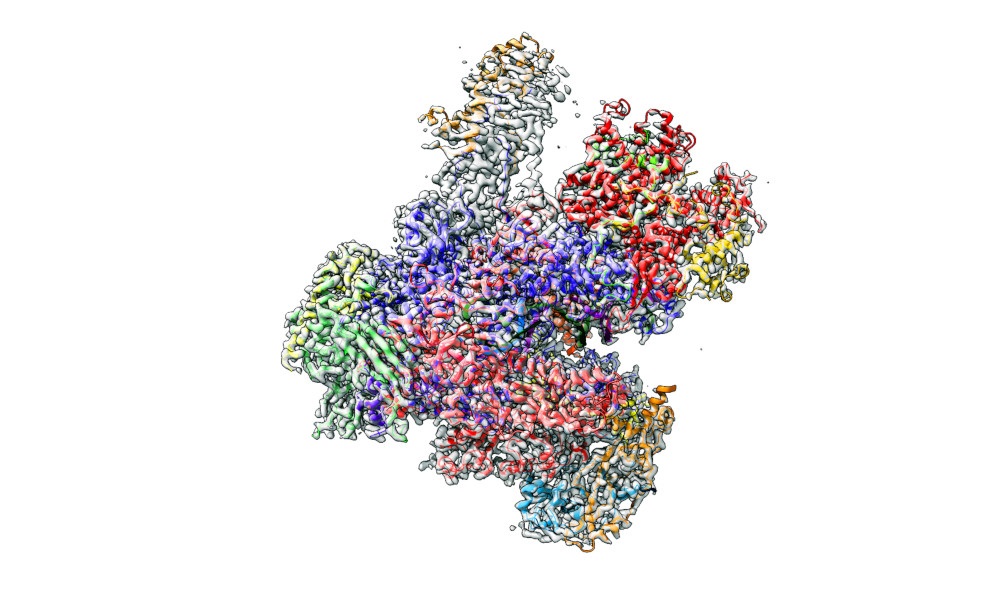
Cellular modern art

Complex life on Earth exists thanks to the machinery that can be found in nearly every individual cell that makes up plants, animals, humans, and other organisms. In eukaryotic organisms – those in which the cell has a nucleus – it is the nucleus that contains the mechanisms for replication, regulation, and expression of genes in the form of DNA and its lesser known sister RNA.
This week’s Picture of the Week, which could also be a masterpiece of modern art, shows the enzyme RNA polymerase III (Pol III), an assembly of 17 individual proteins combined into this complex structure. Located in the nucleus of eukaryotic cells, Pol III reads DNA and uses it to synthesise short and structured RNAs in a process called transcription. The genes transcribed by Pol III are sometimes referred to as housekeeping genes, as they’re needed for essential functions in the cell. Pol III is therefore required in nearly all cell types, and is an essential part of the mechanisms that work constantly to keep our body functioning.
Mathias Girbig, a PhD student in the Müller group at EMBL Heidelberg, took this image and coloured the 17 individual proteins in the enzyme in different colours. The grey and transparent surfaces visible in the image have been calculated from the actual experimental data. Mathias and his colleagues obtained this so-called cryo-electron microscopy density map after recording thousands of images of the molecule under a cryo-electron microscope.
Credit: Mathias Girbig/EMBL
If you have a stunning picture of your science, your lab or your site, you can submit it here.


